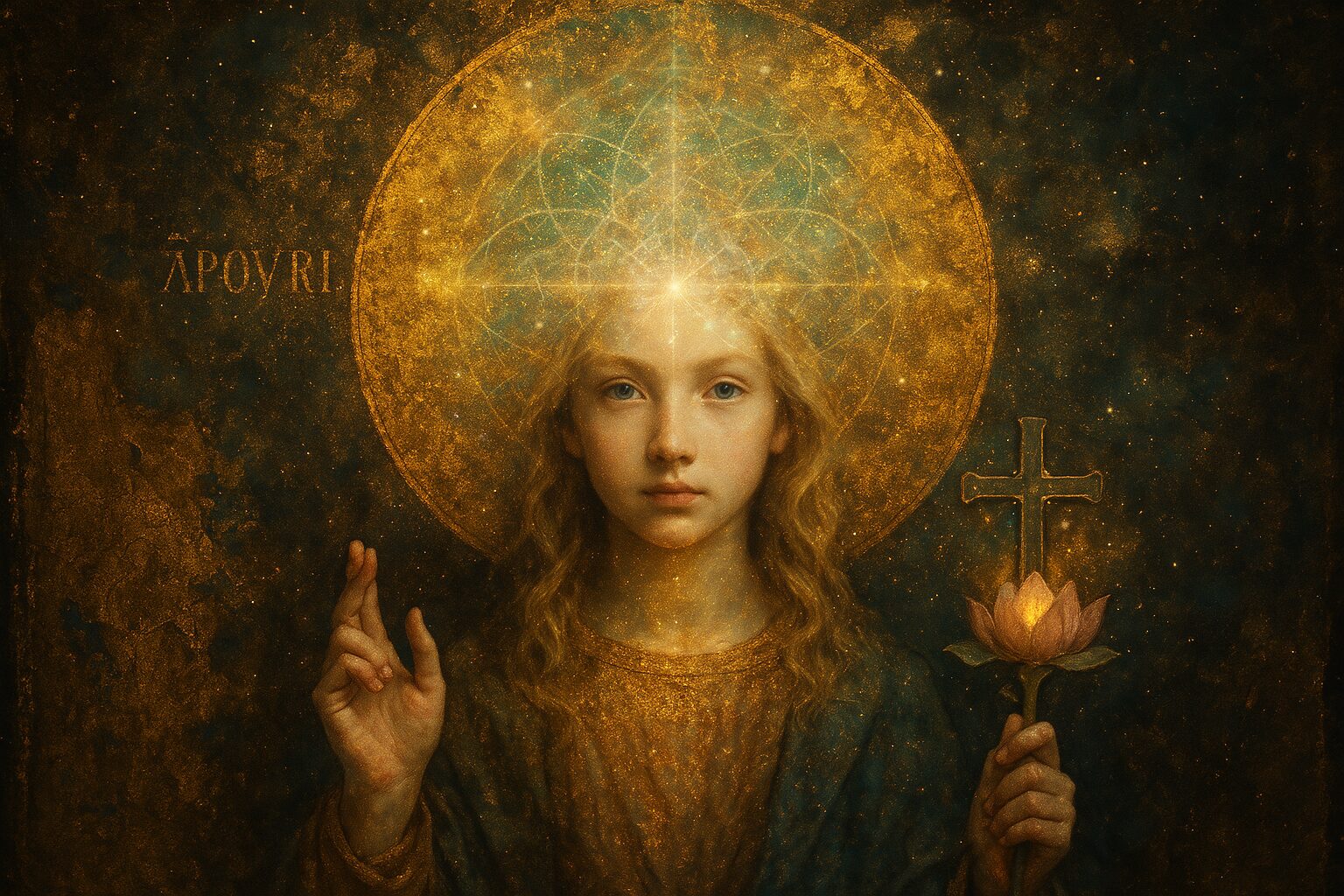In the bustling, often turbulent world of adolescence, some young souls seem to radiate a unique sense of inner peace and spiritual wisdom, even in the face of the chaos around them. One such figure is Yaouyue Ri, a young woman whose life story is not just about the trials and triumphs of growing up, but a deeper spiritual journey—one that resonates with many who are on the cusp of their own awakening.
Yaouyue Ri, a name that in itself speaks of balance—“Yue” meaning moon, and “Ri” meaning sun—was born into a world of contrasts. Like the interplay of the lunar and solar forces, her life unfolded in moments of light and shadow. But from a young age, it was clear that she was destined to walk a path that transcended the ordinary, one that blended the mystic and the mundane in a way that would forever alter the course of her existence.
The Dawn of the Spiritual Path: An Early Awakening
Yaouyue Ri’s story begins not with grand gestures, but with quiet moments of introspection. Born in a small village surrounded by nature, she spent much of her early years in solitude, often seeking refuge by the riverside or beneath the ancient oak tree that had witnessed generations of her ancestors. From a tender age, she developed a deep connection to the natural world, feeling an inexplicable pull toward the rhythms of the earth, the cycles of the moon, and the infinite stars above.
Her spiritual journey began in the simplicity of these moments, where time seemed to slow, and she could sense the pulse of the universe. It was during these times that Yaouyue Ri began to understand that her essence was not confined to the physical body, but was intricately woven into the very fabric of the cosmos. Her connection to the moon—her namesake—became a guiding light, representing intuition, femininity, and the power of reflection.
At the same time, the sun, symbolizing her strength and vitality, played a crucial role in her growth. These two forces, seemingly opposing yet complementary, became the foundation of her spiritual identity. The teachings of balance and harmony between light and dark, within and without, were becoming her compass.
The Struggles of Adolescence: The Inner Battle
As with all teenagers, Yaouyue Ri faced her own set of challenges. The external world of school, social pressures, and family expectations weighed heavily on her. Yet, her inner journey was one of discovering how to reconcile the expectations of society with the call of her soul. The more she tried to fit into the molds of others, the more disconnected she felt from her true self.
This was a period of inner turmoil, where Yaouyue Ri grappled with the complexities of identity and belonging. She was often torn between the expectations of her family, who wished her to pursue conventional paths, and the yearning of her heart, which longed to explore spiritual realms and higher truths. In her confusion, she sought comfort in ancient texts, quiet meditation, and long walks in nature.
It was during this turbulent period that she discovered the teachings of mindfulness and self-awareness. Guided by ancient wisdom, she learned to embrace the ebb and flow of her emotions, rather than suppress them. She understood that the darkness within her was not to be feared, but embraced as a part of her growth. It was a time when Yaouyue Ri learned that the most profound strength arises not from fighting inner struggles, but from surrendering to them with grace and patience.
The Blossoming of the Inner Light: A Spiritual Renaissance
By her late teens, Yaouyue Ri had undergone a profound transformation. The once restless girl who had struggled to understand herself had emerged as a young woman grounded in self-awareness and spiritual insight. She realized that the path she was walking was not just her own—it was a path shared by all who seek to awaken to their true nature.
Her studies in mindfulness and spiritual practices deepened, and she began to incorporate these principles into her everyday life. Meditation became her sanctuary, where she learned to listen to the whispers of her soul. Yoga, too, became an integral part of her routine, allowing her to harmonize her body with her mind and spirit. Through these practices, Yaouyue Ri discovered a sense of wholeness that had eluded her in earlier years.
It was during this phase of her life that Yaouyue Ri began to explore the concept of energy—the life force that connects all things. She understood that her own energy was sacred, a manifestation of the divine flow that runs through the universe. Through intentional practice, she cultivated her inner energy, learning to channel it not only for her own growth but for the benefit of others.
In her quiet moments, she reflected on her name—Yaouyue Ri—the union of sun and moon. It was a reminder that her spiritual path was not one of extremes, but of balance. She was both the sun and the moon, a reflection of the eternal dance between light and dark. Her life was a testament to the beauty of integration, where the masculine and feminine energies within her coexisted in harmony.
A Modern-Day Mystic: Living with Purpose
As she entered adulthood, Yaouyue Ri continued her journey, embracing both the material and spiritual worlds with equal reverence. Her deep understanding of the interconnectedness of all life led her to pursue a path of service, helping others discover their own spiritual truths. Through her guidance, many young people found the courage to embark on their own journeys of self-discovery.
Yaouyue Ri’s spiritual biography is a reminder that the path to awakening is not linear—it is a series of ebbs and flows, challenges and triumphs. Her journey is one that teaches us to honor the cycles of life, to listen to the wisdom within, and to walk with integrity in the world. Like the moon and the sun, she embodies the balance between opposing forces, showing us that true strength lies not in dominance, but in harmony.
In a world often consumed by noise and distraction, the story of Yaouyue Ri serves as an invitation: to pause, to reflect, and to awaken to the deeper truths that lie within. It is a call to all of us—especially the young—to embrace our own spiritual path with courage, grace, and an open heart.

